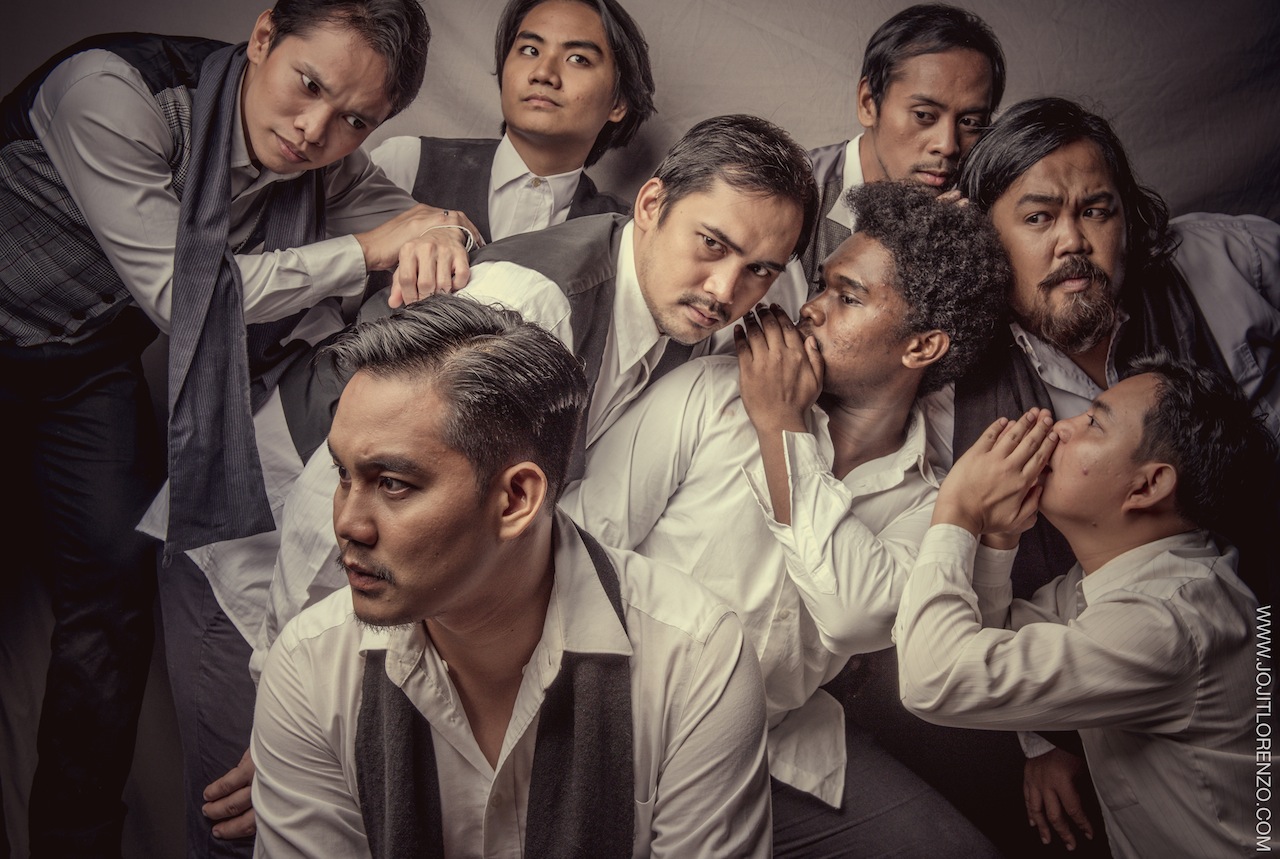
REVIEW: “Ang Pag-uusig” proves the transcendent relevance of Arthur Miller
Themes of hysteria, peaceful lives rumbled, and an establishment quick on the draw makes Arthur Miller’s “The Crucible” a near-perfect allegory for the current political climate. It even features a young woman drunk on newly-found power and influence as the instigator of it all.
But, this particular work has been historically staged in territories right before political regimes turn draconian. “As a warning,” Miller says. Tanghalang Pilipino brings back this American classic to serve that same purpose and with Dennis Marasigan’s clear-eyed direction and Jerry Respeto’s lucid and potent translation, the message is quite clear.

The cast of Ang Pag-uusig
In 17th century Salem, something seemed to have afflicted the young women of the town. It’s Puritan America and the people are quick to call it the work of the Devil. Cunning Abigail Williams (Antonette Go portrays her character with magnetic menace, even when she’s not at the center of a scene) sees this as an opportunity to ruin the name of an upstanding, pious woman whose husband she covets.
The small town spirals into lawlessness, where they take the young women’s word for gospel that they have been cursed by townsfolk who have made pacts with the Devil. It started with the drunks and the poor, until even upstanding citizens of the small town are branded as witches. To be suspected is a death sentence, evidence be damned.
The show’s ensemble is comprised of Tanghalang Pilipino’s Actors Company, a group of young performers all playing characters of varied ages in the story. For some roles, the production relied on ham-handed trickery to give the illusion of age. But, quivering voices (Lhorvie Nuevo as Rebecca Nurse), powders in the hair (Aldo Vencilao as Giles Corey) and other tricks only go as far as the superficial and the miscasting of young actors (particularly for the roles of Marco Viana as Reverend Parris and Joshua Tayco as Reverend Hale) undercut the intensity and the reality of the story.
This is in stark contrast to when the actors portray characters whose life stages they can better fathom. Go was a captivating Williams, and equally as engrossing were her band of mischievous friends (Eunice Pacia, Blanche Buhia) especially in the 2nd act’s court scene.

The young women of Salem (Antonette Go, Lhorvie Nuevo, Blanche Buhia, Doray Dayao, Monique Nellas, and Eunice Pacia) fall under a spell in Ang Pag-uusig
While she was absurdly cast as Rebecca Nurse, Nuevo is astounding as Mary Warren, the Proctors’ stubborn young charge. She perfectly conveyed the humor and, later on, the confusion and betrayal and possession that came with her impressionable youthfulness.
Where “The Crucible” is usually the story of John Proctor’s temptation, prosecution, and fall, “Ang Pag-uusig” centers on the descent of a quiet, humble town. JV Ibesate’s Proctor melds as one of Salem’s people— at least in the first act. By the second act, he was able to bring himself at a height of gripping emotion. From quietly breaking down as his wife inadvertently causes his damnation, to his final scene of pain and anger over the ruination of his name, he summons up a performance that was nothing short of electric.
In a none-too-subtle theatrical end scene, we see Proctor hung for his principles. Regardless, it is a hero’s death, for his life as a good man will bring into question the validity of these persecutions, bringing us back to the message of the piece as warning: shall we wait for an influential innocent’s death by the hand of a wayward government before we stop the abuse of power–and yes, political hysteria– in its tracks?

